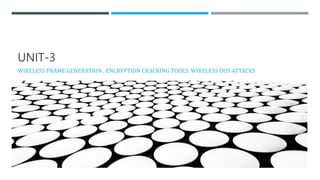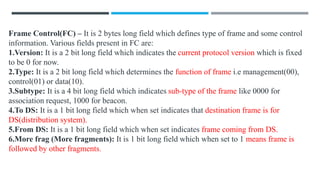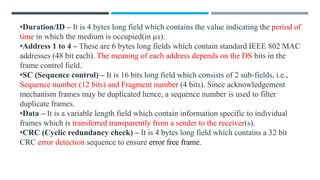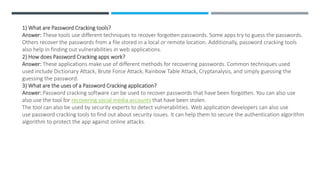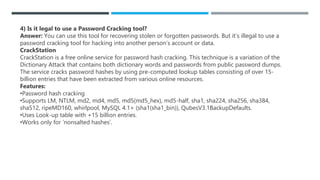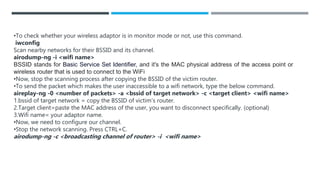The document discusses wireless frame generation, password cracking tools, and wireless denial of service (DoS) attacks. It provides details on:
- The structure and fields of IEEE 802.11 wireless MAC frames, including frame control, duration, address, sequence control, and frame check sequence fields.
- Common password cracking tools like CrackStation, AirCrack, and John the Ripper, describing their features and how they perform dictionary, brute force, and rainbow table attacks.
- How to conduct a wireless DoS attack against a WiFi network to disconnect users by sending authentication packets using the aireplay-ng tool in Kali Linux after scanning for the target network's BSSID and channel.
